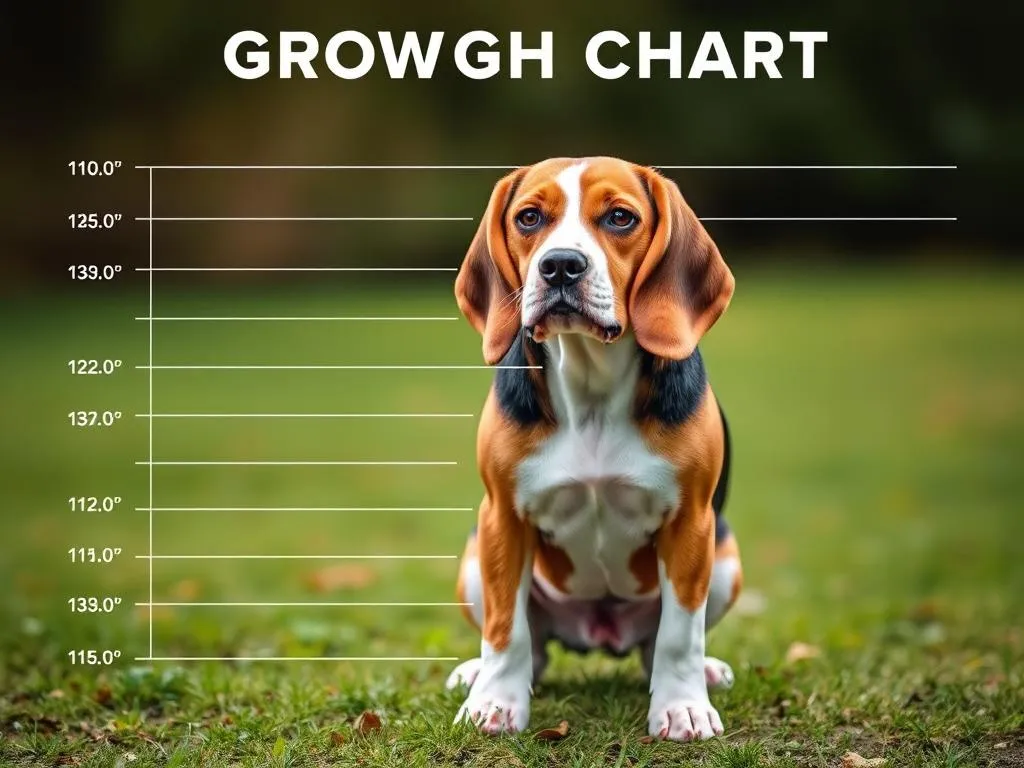
Understanding the vast world of dog breeds is essential for any potential dog owner. Each breed comes with its own unique characteristics, temperaments, and health considerations. Among the popular breeds, the Beagle stands out for its friendly nature and versatility. This article will focus on Beagle size, weight, and a growth chart to help you better understand this beloved breed.
Overview of Dog Breeds
Definition of Dog Breeds
A dog breed is a specific group of domestic dogs with a particular set of characteristics that distinguish them from other breeds. These distinctions can include size, shape, behavior, and even temperament. Historically, dog breeding has been influenced by various factors, including work roles, companionship, and even aesthetics. Over time, selective breeding has led to the development of distinct breeds tailored for specific tasks, such as herding, hunting, and guarding.
Importance of Breed Knowledge
Understanding the characteristics of different breeds is crucial for prospective pet owners. Knowledge of breed-specific traits can influence decisions related to training, care, and lifestyle compatibility. For example, certain breeds may be more prone to specific health issues, while others may require more exercise or mental stimulation. Being informed helps owners provide better care and ensures a harmonious relationship between humans and their canine companions.
Introduction to Beagles
History and Origin
Beagles trace their roots back to ancient Greece, where they were bred as scent hounds for hunting. The breed evolved over centuries, with the modern Beagle being recognized in the 19th century. Known for their exceptional sense of smell and tracking abilities, Beagles were primarily used for hunting small game like rabbits and hares. Their friendly demeanor and adaptability have made them a beloved family pet across the globe.
Characteristics of Beagles
Beagles are small to medium-sized dogs known for their friendly and curious nature. They typically have a short, easy-to-maintain coat that may come in various colors, including tri-color (black, white, and brown) or lemon (light tan and white).
General Temperament and Personality: Beagles are known for their outgoing and playful personalities. They are affectionate and tend to get along well with children and other pets, making them excellent family companions.
Common Behavioral Traits: Beagles are intelligent but can be quite stubborn. Their strong sense of smell often leads them to follow their nose, which can sometimes result in wandering off if not properly supervised. They require consistent training and socialization to channel their energy positively.
Beagle Size and Weight
Average Size of Beagles
Beagles come in two primary size categories: standard and miniature. While there is some overlap, understanding these categories can help potential owners prepare for the right size.
- Standard Beagles: Generally, standard Beagles stand between 13 to 15 inches tall at the shoulder.
- Miniature Beagles: Miniature Beagles are usually around 10 to 13 inches tall.
Average Weight of Beagles
The weight of a Beagle can vary based on its size category:
- Standard Beagles: Typically weigh between 20 to 30 pounds.
- Miniature Beagles: Usually weigh between 10 to 20 pounds.
These weight ranges can vary slightly based on genetics and lifestyle factors.
Beagle Growth Chart
Understanding the Growth Stages
Beagle puppies experience several growth stages, each with unique needs. Tracking their growth helps ensure they are developing healthily. The primary stages are:
- Puppy Stage: Birth to 6 months
- Juvenile Stage: 6 months to 1 year
- Adult Stage: 1 year onwards
Beagle Growth Chart Overview
Understanding the growth of Beagles involves looking at both weight and height at various ages. Below is a general growth chart for Beagles:
| Age (Months) | Height (inches) | Weight (pounds) |
|---|---|---|
| 1 | 8-12 | 3-5 |
| 2 | 10-14 | 5-10 |
| 3 | 12-15 | 10-15 |
| 4 | 12-15 | 10-20 |
| 5 | 13-15 | 15-25 |
| 6 | 13-15 | 20-30 |
| 7 | 13-15 | 20-30 |
| 8 | 13-15 | 20-30 |
| 9 | 13-15 | 20-30 |
| 10 | 13-15 | 20-30 |
| 11 | 13-15 | 20-30 |
| 12 | 13-15 | 20-30 |
Factors Influencing Growth
Several factors can influence a Beagle’s growth, including:
- Genetics and Heredity: The size and weight of the parents can significantly influence the size of the offspring.
- Nutrition and Health: A balanced diet is crucial during the growth stages. Poor nutrition can lead to health issues and stunted growth.
- Exercise and Overall Care: Regular exercise contributes to healthy physical development and helps prevent obesity.
Health Considerations for Beagles
Common Health Issues
Like all breeds, Beagles are prone to certain health issues. Being aware of these can help owners take preventive measures:
- Obesity: Beagles love to eat, making them susceptible to weight gain. Maintaining a healthy diet and regular exercise is essential.
- Ear Infections: Their floppy ears can trap moisture, leading to infections. Regular cleaning and inspections are crucial.
- Hip Dysplasia: This genetic condition can affect their mobility and quality of life.
Regular Vet Checkups
Routine veterinary visits are vital for the health of Beagles. Regular checkups allow for early detection of potential health issues. Vaccinations and preventive care, such as flea and tick treatments, are also essential to ensure a long and healthy life.
Caring for Your Beagle
Nutrition and Diet
Proper nutrition plays a significant role in a Beagle’s health. Puppies require a diet rich in protein and fat to support their rapid growth. Adult Beagles benefit from a balanced diet that includes high-quality dog food, ensuring they get the nutrients they need without excess calories.
Exercise Needs
Beagles are energetic dogs that require daily exercise to stay healthy and happy. A combination of walks, playtime, and mental stimulation is ideal. Here are some recommended activities:
- Daily walks (at least 30 minutes)
- Playtime in the yard or park
- Interactive toys to challenge their minds
Grooming and Maintenance
Beagles have short coats that are relatively easy to maintain. Regular brushing helps reduce shedding and keeps their coat healthy. Additionally, routine grooming includes:
- Checking and cleaning their ears to prevent infections
- Regular dental care to maintain oral health
- Bathing as needed to keep them clean
Conclusion
Understanding Beagle size, weight, and the growth chart is vital for potential owners. Knowing what to expect as your Beagle grows helps in providing the best care possible. Beagles are wonderful companions with unique needs that require attention and love. By being informed about their specific characteristics and requirements, you can ensure a happy and healthy life for your Beagle.
FAQs about Beagles
What is the typical lifespan of a Beagle?
Beagles generally have a lifespan of 12 to 15 years, depending on their overall health and care.
Are Beagles good family dogs?
Yes, Beagles are known for their friendly and affectionate nature, making them excellent family pets.
How do Beagles interact with children and other pets?
Beagles are typically good with children and other pets, but early socialization is key to fostering positive relationships.
What are the pros and cons of owning a Beagle?
Pros: Friendly, good with families, intelligent, and adaptable.
Cons: Can be stubborn, prone to obesity, and may require more exercise.
How can I help my Beagle maintain a healthy weight?
Regular exercise, portion control in meals, and a balanced diet are essential for maintaining a healthy weight in Beagles.









